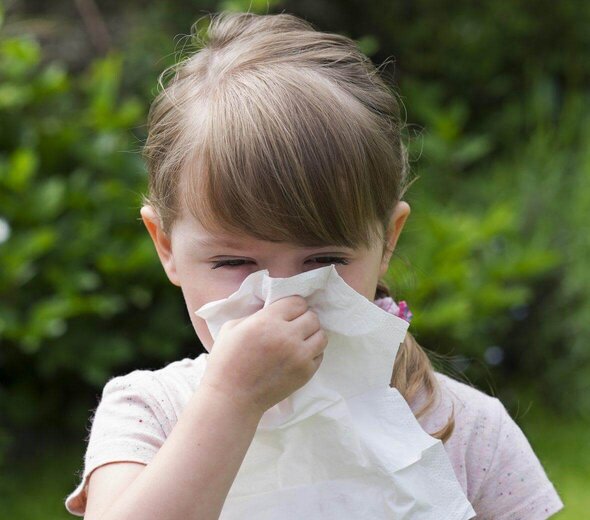

After birth the immune system of your baby is still not fully developed. Each day his organism learns which molecules are harmful and which can be ignored. Pollen, animal fur, certain food products, detergents or dust mites can be dangerous for some little ones.
According to doctors, the most common allergy is an allergy to dust. It may even affect infants. Small babies are particularly exposed to the effects of various allergens. These babies breathe faster thereby inhaling more dust.
The most dangerous is protein contained in dust mite faeces. It is a very potent allergen that causes various types of skin irritations, and rashes. It may irritate mucous membranes and cause allergic rhinitis, and even lead to atopic dermatitis or asthma.
To prevent your child from becoming allergic you have to take proper care of his surroundings. Prevention is the key factor in the fight against mites. By keeping to certain rules you may not eliminate but will surely reduce the risk of allergy.
1. Carpets and rugs, especially those suitable only for dry cleaning, are a perfect habitat for dust mites. Washing carpets with special cleaning agents is risky as well, because they contain substances that can irritate the respiratory system or cause skin allergies. In fact, it is best to have bare floor. However, if you do not want to remove carpets altogether, you'd better choose small, light, cotton and machine washable rugs than heavy woolen carpets.
2. Curtains and drapes are equally dangerous. The best option for an allergic baby are blinds or plastic jalousies that can be easily wiped with a wet cloth. I personally recommend wooden blinds. They work very well with us.
3. You should use mild cleaning agents, intended especially for allergic people. They are not much more expensive and they will not irritate the respiratory tract or skin of your little one as standard cleaning agents. You can also take advantage of old grandmother's tips. For example clean windows and mirrors using vinegar diluted with water.
4. Instead of a standard vacuum cleaner, you can invest in buying a special vacuum cleaner for wet cleaning, so that dust does not float during cleaning. It is quite difficult to use, because after each use you need to wash it and replace water, but it is extremely effective and it eliminates dust much better than an ordinary vacuum cleaner.
5.You should dust the furniture everyday. Do it best with a damp microfiber cloth, because brushes or feather dusters only float the dust without removing it. There is no need to use any cleaning agents, water will do.
6. Toys and books should be kept in boxes or containers. Books, various trinkets, souvenirs are better to be kept in locked cabinets than on shelves, where they only gather dust. It is good idea to choose wardrobes and shelves from the ceiling to the floor. The best are wooden and laminated ones. They are best cleaned with a wax-soaked cloth, so that dust deposits more slowly.
7. I recommend to minimize the number of plush toys that are mites habitat and are hard to keep clean. Of course we can not completely eliminate teddy bears and rag dolls, but you should pay special attention when purchasing them whether they are machine washable.
8. Try to keep your clothes in closed, but ventilated wardrobes or a closet. It is better to store them on hangers than cram on the shelves. Instead of standard drawers or shelves you can mount metal bins, which allow air and do not gather dust. Remember also to protect the clothes against pests. Hang herbs instead of mothballs in the closet. I recommend rosemary, cedar or commonly known lavender. They are safe for allergic people.
9. Mattress and bedding are probably the largest habitat of mites in the bedroom. Eliminate the natural feather in favour of materials intended for allergic people. Choose a light mattress that can be easily removed and ventilated. Flip it over at least once a month. Try to ventilate the bedding every day. Remember to regularly change and wash the bed linen. Each morning you should also put the bedding into cases or special containers, to minimize the accumulation of dust.
10. Sofa and armchairs are surely the places where you and your family spend most of your time. The safest are those made of leather or vinyl. They do not accumulate dust and are easy to clean. However, if you pick a different fabric, which can accumulate hazardous dust mites, try to choose such a model, where you can take the covers off and wash them.
11. In the bathroom you should have a working fan that removes excess moisture. Dry the towels on a radiator and change them every other day. Avoid drying the laundry in the bathroom, because it greatly increases the already high air humidity, thus accelerating the growth of microorganisms. Clean the baby bath before each bath using washing agent intended for children. Rinse the washer and dry it carefully. Replace the washer a few times a week.
Try to ventilate the apartment as often as possible. In the summer and spring you have surely a window open all the time, but in winter you have to remember to air all the rooms, especially before bedtime. Avoid the use of air fresheners because they may irritate the respiratory tract. Instead of that, you can hang a bunch of herbs, or put them in a vase. Of course you need to replace them often so that they do not accumulate dust.
However, do not go from one extreme to the other. Keep your house clean but not sterile, because it is impossible to avoid contact with dust and dust mites anyway. We stay in different places: at grandparents, aunt, friends, and later at schools and kindergartens. They are not sterile and dust-free places. It is important to care for infants and children by creating a proper tolerance to external allergens, and a good basis for the development of the immune system - responsible for resistance and tolerance - is a healthy diet right from the birth, the breast milk and avoiding aggressive chemicals in the household. These rules must be rigorously observed when the child is diagnosed with an allergy.